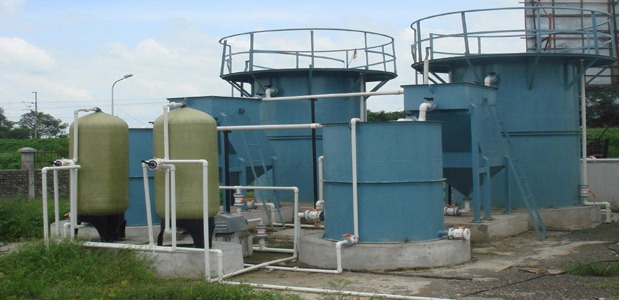Effluent-treatment-plant

As the number one ETP plant manufacturers in India, we at GIECL supply a sophisticated range of effluent treatment plant in India that are applied mainly in the electroplating industry. Due to the presence of highly toxic contents such as cyanide, chrome etc, and therefore the industry has been principally categorized as a pollutant industry. We are specialized in achieving the precious metal chrome from the effluent. This method is cost-effective and maybe a pollutant control. Our company is in a position to produce food processing effluent treatment plants in India for numerous sorts of food industries due to the dynamic and competent staff expertise.
There has been an increasing regulatory pressure to treat and disintegrate waste from industries that contain dirt particles like chemicals, metals, organics and oil. As a well-known effluent treatment plant manufacturers in India, we tend to create sure that our plant will give the most effective treatment for the effluents from Pulp and Paper manufacturing, Sugar and distilleries, chemical processing, Slaughterhouse and Meat processing, Food & Beverage industries, Cement industries, Pharmaceuticals and Bulk medication industries, etc.
Preliminary Treatment:
This involves screening and removal of large solids, such as debris and particles, through processes like bar screens and grit chambers.
Primary Treatment:
In this stage, solid particles and suspended materials are settled and removed through processes like sedimentation or flotation.
Secondary Treatment:
This phase involves the biological degradation of organic matter present in the wastewater through biological processes such as activated sludge, trickling filters, or biofilm reactors. These processes promote the growth of microorganisms that break down organic pollutants.
Tertiary Treatment:
This stage focuses on further removing residual pollutants, such as nutrients (nitrogen and phosphorus), dissolved solids, and fine suspended particles. Tertiary treatment methods may include filtration, disinfection (e.g., chlorination or UV disinfection), or advanced processes like membrane filtration or reverse osmosis.
Sludge Treatment:
Sludge generated from the primary and secondary treatment processes is treated separately to reduce its volume and stabilize its organic content. Common sludge treatment methods include anaerobic digestion, aerobic digestion, dewatering, and drying.
Effluent Monitoring:
Effluent quality is continuously monitored to ensure compliance with regulatory standards. Parameters such as biochemical oxygen demand (BOD), chemical oxygen demand (COD), pH, suspended solids, and specific pollutants relevant to the industry are typically monitored.
RELATED APPLICATIONS
- COOLING & MIXING. …
- USING NEUTRALIZATION TANK. …
- ADDING CO-AGULANT. …
- USING SETTLING TANK. …
- USING PRESSURE FILTER. …
- CARBON FILTRATION. …
- SECURELY DISCHARGE.
Effluent treatment plants play a critical role in minimizing the environmental impact of wastewater from industrial and municipal sources. They help protect water resources and promote sustainable wastewater management practices.
What are the chemicals used in ETP?
1. For pH neutralization: Acids (HCl) and base (NaOH)
2. Coagulant / Settling Aids: Aluminium Sulphate, Ferric Aluminium Sulphate,Ferric Sulphate, Ferric Chloride,
these may be independent or in combination with Poly Electrolytes (Polymers)
3. For Specific Ion removal, chemicals required as per chemistry of treatment.
4. Nutrients: Urea, Di-ammonium Phosphate
5. Disinfectant: Chlorine, Bleaching Powder (Sodium Hypo-chlorite), Ozone
6. Adsorption / Absorption: Activated Carbon
7. Ion Exchange – based on the specific ion to be removed.

